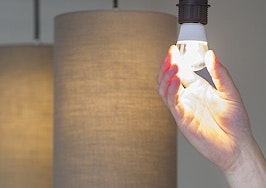- Sometimes staging isn’t about what you have done that resonates the most with potential buyers, but what you refrain from doing.
- In staging a home, your biggest asset is the imagination of prospective buyers.
- Whether you realize it, sometimes the most important decisions you make are the ones that require you to do nothing at all. Staging a home is no exception.
You would be hard pressed to find anyone with more of an inclination toward DIY home staging than me. In fact, I can think of no better way to present a property for sale. There is evidence to suggest that a properly staged home can sell for more money and in a shorter period.
The only question is: Are you doing it right?
It’s relatively easy to find advice on how to become a better home stager, but sometimes the most effectively staged homes are founded on the things you didn’t do. Remember, it’s just as important to appeal to prospective buyers, as it is not to scare them away.
[Tweet “Remember, it’s just as important to appeal to prospective buyers, as it is to not scare them.”]
The trick is to eliminate the mistakes so that the highlights shine even brighter. In other words, sometimes it isn’t about what you have done that resonates the most with potential buyers, but rather what you refrain from doing.
There is a right and a wrong way to stage a home. Instead of focusing on what you should do, I want to take a minute and shed some light on the things you should avoid doing.
You never know; not doing the following could be your biggest selling point:
1. Don’t over-stage your welcome
I could go on and on about the empirical evidence in support of a properly staged home, but I digress. Even sellers must be aware of when they infringe on a home’s best features — or lack thereof — by incorporating too much.
It’s a gray area, but you need to be able to differentiate between a living space that is staged well and one that simply has too much going on.
If you are of the mind that you are somewhere in between, I encourage you to err on the side of too little. It’s almost always better to have too little than too much.
Sellers must be careful when staging a home for sale, as I can assure you there comes a point when it might be counterproductive. That said, there are at least two crucial reasons for limiting the amount of staging you do: spatial awareness and visual representation.
For starters, staging a home is meant to enhance its features, and its size is no exception. The more things you put in a room, the smaller it becomes. You are reducing the amount of usable square footage with everything you include. Please be mindful of how much you intend to stage.
Of particular importance, however, is the visual representation you are trying to establish. Stagers are advised to make prospective buyers feel at home. Provide them with a space they can picture themselves living in, but don’t go as far as painting the whole picture.
Stage a room just enough for them to get an idea of what it would look like if they lived there. Provide the canvas, and let their imagination do the rest. The second you convolute their vision with an over-staged home, you might have already lost them.
[Tweet “When staging, provide a canvas, and let the prospective buyers’ imagination do the rest.”]
2. Don’t confine furniture to wall space
Whether it’s human intuition or pure instinct, far too many people feel obligated to relegate the backs of their furniture to open wall space.
However, I implore you to resist the temptation of confining furniture to walls. Although some circumstances call for the strategic placement of items up against a wall, it is by no means required. I simply want you to rid yourself of the notion that furniture, and couches in particular, must go in a certain spot.
Instead, your main concern should focus on the most conventional setup your layout permits — without sacrificing aesthetics, of course. I recommend setting up rooms in a way that lend themselves to a conversational manner.
If a room layout can serve as a conversational piece, that’s one thing, but if the layout is physically conducive to holding conversations, that’s another.
Your buyers will surely appreciate your effort, even if they don’t realize it at the moment. Do what you can to position furniture and decorations in a way that condones conversation; it tells people a respective area is great for hosting.
3. Don’t neglect the little things
Again, staging a home is all about presenting prospective buyers with a blank canvas that they can work with. You don’t want to show them too much, as to prevent them from envisioning their own family living there, but you do want to give them a catalyst to spark their imagination.
The little things do matter. It isn’t enough to simply place a coffee table in the right spot; you must proceed to decorate the table.
If you haven’t hired a professional stager, go out and purchase small items to complement each piece of furniture. Done correctly, the little additions can go a long way in distinguishing the home from the competition.
Feel free to place a couple of books on the end table or some flowers in the bathroom. There are a few items I highly recommend; they might not sound like much upfront, but I assure you that their presence goes a long way in fostering a welcoming atmosphere:
- Place fake fruit in a decorative bowl in the kitchen.
- Hang decorative hand towels in the kitchen.
- Strategically place kitchen utensils and cutting boards.
- Use potpourri in the bathroom.
- Try placing a rubber ducky on the edge of the bathtub (a little trick I like to use so buyers can envision raising children in the home).
- Stage a bar with glasses and shakers.
- Try baking cookies before showing a home (the smell will almost certainly stimulate nostalgic feelings).
Feel free to complement your furniture with the appropriate “trinkets.” However, I advise you to keep it neutral. Remember — you want to appeal to the largest audience possible. Don’t risk scaring away potential buyers with an ill-placed book that has controversial implications.
[Tweet “Remember, when staging, you want to appeal to the largest audience possible.”]
Be selective with what you choose to decorate with, and you will notice your staging efforts can go a long way in selling your home.
4. Don’t stage every room
If you haven’t noticed already, there is a reoccurring theme that has become synonymous with the most successful real estate stagers: prospective buyers must unequivocally be able to picture themselves living in the respective property.
Therefore, I recommend leaving some rooms untouched — clean, of course, but untouched. In fact, the only rooms you should stage are the kitchen, living room, any bathrooms and the master bedroom.
Don’t bother staging guest rooms or offices, as it detracts from the blank canvas theory I previously discussed. Potential buyers need to be able to picture themselves living in the home.
How can you expect him or her to do so if you have something occupying every nook and cranny of the interior? Leaving a room empty will help them envision their own belongings occupying the space.
I can’t tell you how important it is to elicit such a reaction. Their imagination might be your largest asset.
5. Don’t take it personal
Once again, the concept of staging a home is simple: allow buyers to visualize themselves living in the home. However, to do so, you must remove yourself from the equation.
In fact, leaving remnants of the previous family behind will go a long way toward sabotaging your efforts to sell. Even personal photos, for that matter, can have a larger impact than you might think.
They have a way of convincing buyers that the home isn’t theirs and never will be. Your goal is to establish a blank slate — something the buyers can mold into their own living space.
At the very least, you will have an uphill battle if there are personal items preventing them from envisioning the living space as their own. So why not help them along? Get rid of anything that might suggest the home belonged to someone else.
Of course, there is an entire laundry list of things I could tell you to do, but nothing will contribute to the sale of your home more than avoiding these simple yet critical mistakes.
Look beyond the to-do lists you have probably seen a million times at this point; and make sure you are checking the boxes on the don’t-do list as well.
Whether you realize it, sometimes the most important decisions you make are the ones that require you to do nothing at all. Staging a home is no exception.
Than Merrill is the founder and CEO of FortuneBuilders and CT Homes. Connect with Than on LinkedIn or follow him on Twitter @ThanMerrill.




